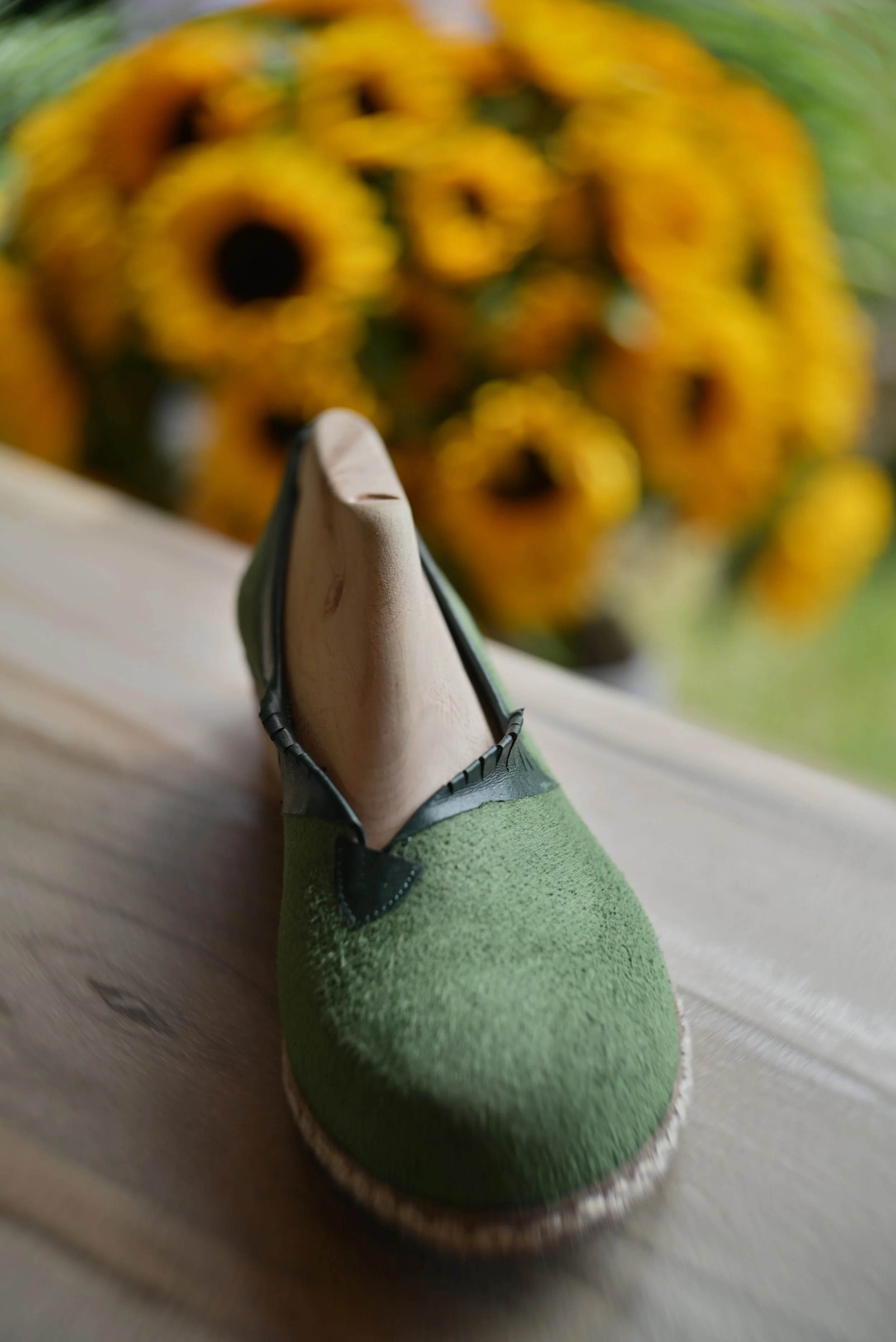Making the Prototype
My formal training was condensed into five days. It was an incredibly meaningful and mind-opening experience. During those hours, I fully understood how amateurish my previous approach had been. But the work I did during my course was also so boring, standard. In those five days, I made a pair of loafers. I simply listened to the instructions from a professional shoemaker. That was all!
Knowing the basics, the standards, provides a solid foundation, that's for sure. At some point, however, you have to ask yourself: Is this really how I want to work?
In my opinion, in shoemaking, you have to look for alternatives. Finding alternatives makes my daily work a pleasure. Spending time alongside a shoemaker who has been doing this work his whole professional career gave me the answer: I'm so not into... that!
I realized that my approach has more to do with tinkering than with an attitude of "Okay, let's just do it!" I want to cultivate my innate curiosity as a gift from God. I want to feel lost sometimes and look for the answers myself. Above all, though, I'm so against any kind of routine at work. That's why I gave up freaking office position. No, thank you.
I'm a journeyman, constantly searching for something new. I don't want to reach a destination; I want to travel.
This kind of attitude toward work forces me to constantly experiment. It's a fantastic place to be in. Working daily for Warsaw workshop on fairly standard shoemaking, I can allow myself the freedom to think outside the box while simultaneously developing my own style.
With all this in mind, let's return to my project of the wholecut pumps. It's a great example of playfulness and the necessity of making prototypes. Overall, the project involves using as few pieces of leather as possible. A streamlined, simple design reflecting my unique, avant-garde, classic style. My second goal was to find a way to avoid hand welting while maintaining the feel of a welted construction.
As I mentioned earlier, my goal was to use that piece of leather from the very top of the last, that remains an extra after wholecut lasting process is complete. However, my initial design idea wasn't successful. It turned out there was far too little left to fully utilize this extra material. So I reduced the amount of it. I came up with something less pretentious.
I was pleased with the result. A simple cut in the lining leather led me fold it over the wholecut upper. This trick allowed me to obtain a small piece of leather solely for decoration at the front and to reinforce the edge at the back.
In this type of footwear, the most important thing is to keep the heel firmly in place inside the shoe. This rigid upper line is extremely helpful in this regard. Besides its utility, I really like the feel of it. This single piece of lining leather covers the edge of the upper and is designed to stand the test of time in terms of functionality.
A design that came straight from my dream proved feasible and is now a reality.
My goal was to relinquish the welt completely by folding over the upper a trimmed elongated midsole edge and then sew through it.
Creating one-piece solutions really excites me, as you can clearly see. Leather is such an elegant material to make that possible. Technically, I know I can do it, but I'm still not sure if this system will pass the durability test.
The idea for this construction method is quite straight forward. It is sewing through the midsole and insole. So that outside, welt-like part and the groove under the shoe holds the insole edge in between, thus making it all a hand-sewn construction. Although it looks simple, it is rather difficult thing to make. If it’s not sturdy enough to be truly functional, this method is certainly not worth the time. This is the greatest advantage of making a fully wearable prototypes, though. The streamlined construction looks attractive on paper, but one can never be completely sure if it works well too.
The upper design and unique construction of this project deserves more attention. At some point, I'll most likely publish the process of creating the final pair in the "Tutorials" section.

